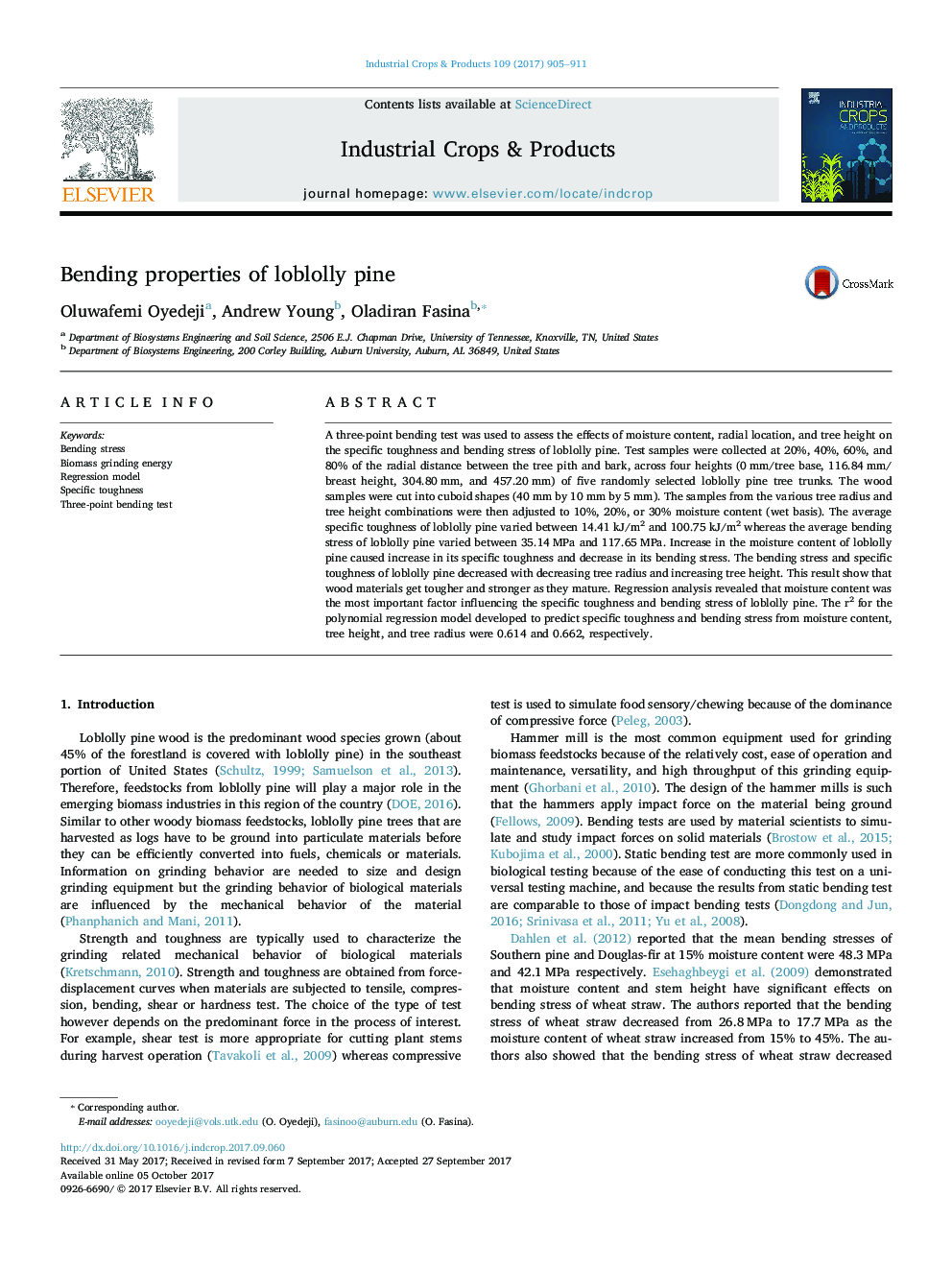| Article ID | Journal | Published Year | Pages | File Type |
|---|---|---|---|---|
| 5761756 | Industrial Crops and Products | 2017 | 7 Pages |
Abstract
A three-point bending test was used to assess the effects of moisture content, radial location, and tree height on the specific toughness and bending stress of loblolly pine. Test samples were collected at 20%, 40%, 60%, and 80% of the radial distance between the tree pith and bark, across four heights (0Â mm/tree base, 116.84Â mm/breast height, 304.80Â mm, and 457.20Â mm) of five randomly selected loblolly pine tree trunks. The wood samples were cut into cuboid shapes (40Â mm by 10Â mm by 5Â mm). The samples from the various tree radius and tree height combinations were then adjusted to 10%, 20%, or 30% moisture content (wet basis). The average specific toughness of loblolly pine varied between 14.41Â kJ/m2 and 100.75Â kJ/m2 whereas the average bending stress of loblolly pine varied between 35.14Â MPa and 117.65Â MPa. Increase in the moisture content of loblolly pine caused increase in its specific toughness and decrease in its bending stress. The bending stress and specific toughness of loblolly pine decreased with decreasing tree radius and increasing tree height. This result show that wood materials get tougher and stronger as they mature. Regression analysis revealed that moisture content was the most important factor influencing the specific toughness and bending stress of loblolly pine. The r2 for the polynomial regression model developed to predict specific toughness and bending stress from moisture content, tree height, and tree radius were 0.614 and 0.662, respectively.
Related Topics
Life Sciences
Agricultural and Biological Sciences
Agronomy and Crop Science
Authors
Oluwafemi Oyedeji, Andrew Young, Oladiran Fasina,
